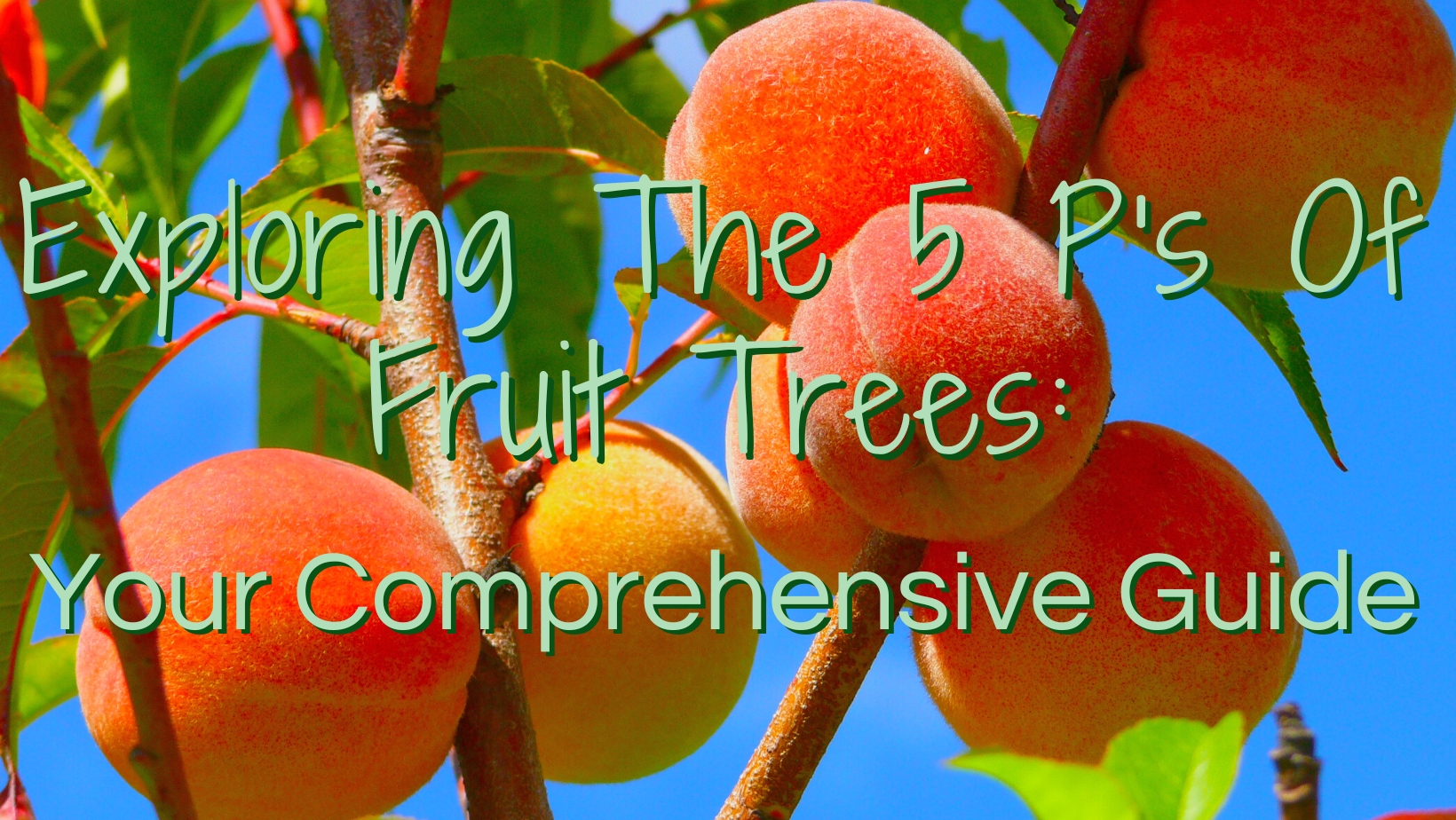Over the past few years, there has been a resurgence in growing your own food at home as homeowners and gardeners become more passionate about nurturing green spaces and fostering fruitful harvests. Growing your own food at home allows you to truly be in control of what you and your family eat.
So, let’s delve into the essential elements of caring for fruit trees. Growing your own fruit is far easier than you think using and understanding the 5 P’s of fruit growing. Together let’s embark on a journey through the 5 P’s: planting, pruning, preventing pests, pollinating, and picking. These pillars form the foundation of successful fruit tree cultivation, ensuring bountiful yields and thriving orchards. So, grab your gardening gloves, and let’s dig in!

1. Planting: Laying The Roots For Success
Planting a fruit tree is a gratifying endeavor that requires thoughtful consideration and meticulous planning. Start by selecting high-quality, disease-resistant trees from reputable nurseries. Choose a suitable location with ample sunlight, well-draining soil, and adequate space for the tree to mature. Proper spacing between trees is crucial to allow for optimal growth and airflow.
When planting, dig a hole slightly wider and deeper than the root ball, ensuring the graft union sits above the soil line. Backfill the hole with a mixture of compost and native soil, gently firming it around the roots. Water the tree thoroughly to settle the soil and provide much-needed hydration to kickstart growth. Remember, a strong foundation is key to the long-term health and productivity of your fruit tree.

2. Pruning: Shaping For Strength And Yield
Pruning is an art form that promotes both the structural integrity and fruit-bearing capacity of fruit trees. Begin by removing any damaged, diseased, or crossing branches to encourage airflow and prevent the spread of pathogens. Next, establish a central leader or open-center shape, depending on the tree’s growth habit.
Regular pruning during the dormant season helps maintain the tree’s desired shape, stimulates new growth, and enhances fruit production. Pay attention to pruning techniques such as thinning, heading back, and rejuvenation pruning to strike the perfect balance between vegetative growth and fruit development. With each careful snip, you’re sculpting a masterpiece that will yield delicious rewards for years to come.

3. Preventing Pests: Nurturing A Healthy Ecosystem The Natural Way
Protecting fruit trees from pests and diseases requires a multifaceted approach that emphasizes prevention and ecological balance. Implement cultural practices such as proper sanitation, mulching, and adequate irrigation to promote tree vigor and resilience. Regularly monitor for signs of pest infestation, including chewed leaves, distorted fruit, and sticky residue.
Consider employing biological controls such as beneficial insects, predatory nematodes, and microbial sprays to suppress pest populations naturally. Additionally, selective use of organic pesticides may be necessary as a last resort, but always follow label instructions and minimize environmental impact. By fostering a harmonious ecosystem within your orchard, you can mitigate pest pressures while safeguarding the health of your fruit trees.

4. Pollinating: Maximizing Fruit Set and Quality
Pollination is the secret ingredient behind successful fruit production, ensuring the transfer of pollen from male to female flowers for fertilization. While some fruit trees are self-pollinating, others rely on cross-pollination between compatible varieties to set fruit. Be sure to plant pollinator-friendly species and provide a diverse array of flowering plants to attract bees, butterflies, and other pollinators to your garden.
Consideration should also be given to timing and weather conditions during the flowering period, as factors such as temperature and humidity can influence pollination efficiency. To further enhance pollination, gentle hand pollination or the strategic placement of pollinator hives may be beneficial. By harnessing the power of pollinators, you’ll maximize fruit set and quality, ensuring a plentiful harvest.

5. Picking: Harvesting The Fruits Of Your Labor
Ah, the moment we’ve all been waiting for – the joyous culmination of months of care and cultivation: harvest time! Knowing when and how to harvest your fruit is essential for preserving flavor, texture, and nutritional value. Each fruit variety has its own unique ripening cues, so familiarize yourself with the specific characteristics of your chosen cultivars.
For most fruits, such as apples and pears, a gentle tug or twist will easily detach ripe fruit from the branch. Handle harvested fruit with care to avoid bruising or damage, and promptly store it in a cool, well-ventilated location to prolong freshness. Remember, the ultimate reward for your hard work is the satisfaction of indulging in nature’s bounty – so savor every juicy bite!
In conclusion, the 5 P’s of fruit tree care – planting, pruning, preventing pests, pollinating, and picking – form the cornerstone of successful orchard management. By adhering to these principles and nurturing your trees with dedication and passion, you’ll be rewarded with a flourishing orchard teeming with luscious fruit. So, roll up your sleeves, embrace the rhythms of nature, and let your fruit trees thrive!


Thank you for this information. I am new at this. And I learned a lot from this store.